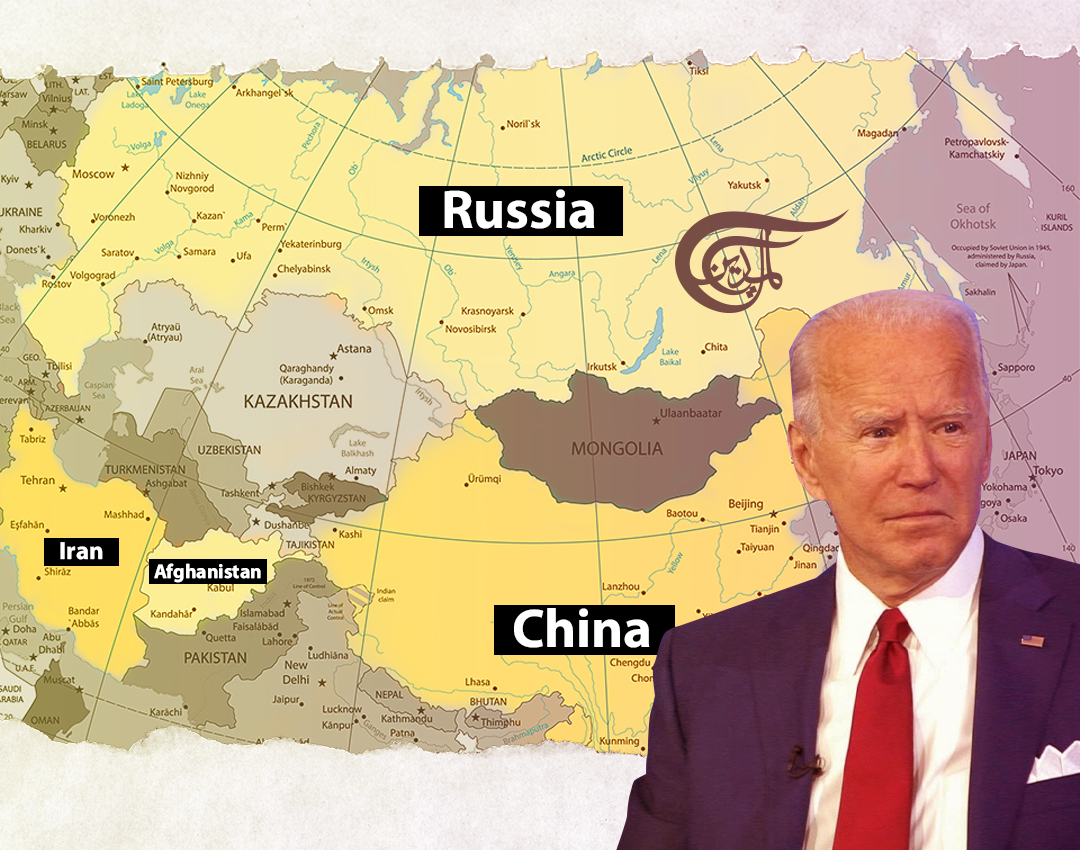Driving a ‘Great Game’ Re-set
What we see in Afghanistan is a Taliban leadership very different from that which I knew in the past. They have taken lessons from past mistakes.
It is more than just a little hint. When President Biden was asked this week by reporters about future relations between the Taliban and China, he evinced pure schadenfreude: “China has a real problem with the Taliban”, said Biden. And not only China, he added, but also Russia, Iran and Pakistan. “They’re all trying to figure out what do they do now. So it will be interesting to see what happens”.
Very plainly, he is expressing the hope that Afghanistan turns into a quagmire for China and Russia – as it did for the US. Straws in the wind as to what Washington might have in mind for ushering China into ‘the Afghan mud’ were already evident when Washington balked at including the ETIM (Eastern Turkistan Islamic Movement) name into a UNSC resolution on Afghanistan. The original draft text specifically demanded that the Taliban do not support certain named terrorist movements. China wanted ETIM identified, too. The US demurred, and ultimately China and Russia abstained on a vote that finally omitted naming names.
ETIM is an Uyghur Islamic extremist organization founded in Western China. Its stated goals are to establish an independent state called East Turkestan, as a replacement for China’s Xinjiang province. Obama put it on the terror list; Trump took it off, and Biden has left it off.
It’s the old playbook. It seems that Biden and Washington just cannot move past those sealed, rigid templates of old. It was former US National Security Advisor Brzezinski, who originally persuaded President Carter – after the Soviet invasion of Afghanistan in 1979 – to sign the secretive directive to ‘seed’ Afghanistan with radical Islamist insurgents. Explicitly, Brzezinski hoped to undermine the then government, and mire the Soviet Union in Afghan mud. It represented then, America’s first venture into using extremist Sunni jihadists as a ‘fat tail’ solvent for weakening, and ultimately destroying, non-compliant governments in the Middle East.
Today, instead of a Saudi-excavated swamp being prepared for Russia in Central Asia, it seems that the US might turn to Pan-Turkic nationalism as the new miracle solvent to disrupt not just Afghanistan, but the whole of Central Asia -- and its economic supply lines, too. “Ankara will seek to use its unique position in, and access to Afghanistan, to improve relations with NATO allies, particularly the US”, says one prominent hawkish US think-tank. As for the costs involved, they continue: "Ankara will likely ... aim to subsidize those responsibilities it does take on by pursuing private contracts and external financial resources from NATO allies".
Afghanistan has a Turkmen minority, and Turkic ethnicity extends - in a swath - up through Central Asia and into Xinjiang. President Erdogan periodically describes Xinjiang as the birthplace of the Turkic race.
The bulk of Turkish forces left Afghanistan on 27 August, reportedly due to Taliban pressure. Erdogan has suggested, however, that he would “seek to position Turkey as a regional power - for purposes of ‘security and stabilisation (sic)’". He proposes that Turkey, Turkic Central Asian countries, and Pakistan might work in association with the Taliban -- were the latter to take “positive steps”. He has not specified what those steps include, but Turkey could leverage its ties to Central Asian countries to fold in Turkish objectives with those of the United States and the NATO alliance, the leading hawkish think-tank, the Institute for the Study of War, opines.
Or, of course, he could equally fold them in, with Russian and Chinese objectives – if the price is right.
For ‘security and stabilisation’, read leverage -- conceived as Erdogan possessing a unique Turkic disruptive potential across Central Asia and into China. (All leaders now speak pure ‘Orwellian’ (where ‘stability’ really means disruptive instability, when they want to grab Washington’s attention!).
The second leaf to the US ‘default template’ is to weaken the target sufficiently such that a pliable opposition figure or movement might be able to elbow out some corner of political ‘space’, and to then build him or set it up, as a mass media celebrity opposition. In recent weeks, however, one such person - Ahmad Massoud - quickly fled Panjshir for abroad, and resistance folded.
Well, the ‘second leaf’ was quickly progressed: Afghanistan’s financial reserves have been frozen, and the IMF and World Bank instructed to cease issuing the Taliban with loans, leaving the country weakened and facing a severe humanitarian disaster.
So, will it work? Will Afghanistan devolve into a quagmire or civil war?
That certainly is possible, in such an ethnically diverse and traumatised society - riven by deep conflicts. It is true that Sunni Islamists have little experience running a country. The problem with ‘old templates’ however, is that they date to 1979, and that’s a long time ago. They do not reflect the huge changes that have occurred since their formulation. What we see in Afghanistan is a Taliban leadership very different from that which I knew in the past. They have taken lessons from past mistakes. But even that is not the essential point.
The key difference is that when the US first exited Afghanistan (after the Soviet withdrawal), they did nothing to fix the Afghan political superstructure after years of the deliberate setting of factions at blood-soaked odds with each other. The Americans washed their hands – and scrambled out. The civil war was fore-ordained. I said that to the US Ambassador and his CIA chief at the time, but they were relishing their ‘revenge’ on Russia so much that they didn’t give a toss.
This time, however, there is one huge difference: The revolution in Afghanistan is but one cog in a major ‘Great Game’ ‘Re-set’. Afghanistan is in indeterminate metamorphosis, but Iran is strategically re-setting eastwards. So is Pakistan. Central Asia is re-setting towards the SCO, EAEU, Russia and China.
Team Biden may dream of the central Asian ‘heartland’ as a new quagmire, but America is gone from it. No one, except India perhaps, wants to give it any houseroom.
The Taliban clearly see who now is in the driving seat -- they have assured China that the ETIM will find no refuge in Afghanistan. They have repeated that they are committed to an inclusive leadership. And China, in turn, has extended a line of emergency financial help: $31million. It is a start.
The point is that unlike when America first quit, Afghanistan now has a support group – Iran, Pakistan, Russia and China -- all of whom have a very big interest in Afghanistan being stood up as a functioning stable entity, without civil war and absent terrorism. And this invites cautious optimism.

 Alastair Crooke
Alastair Crooke
 7 Min Read
7 Min Read












